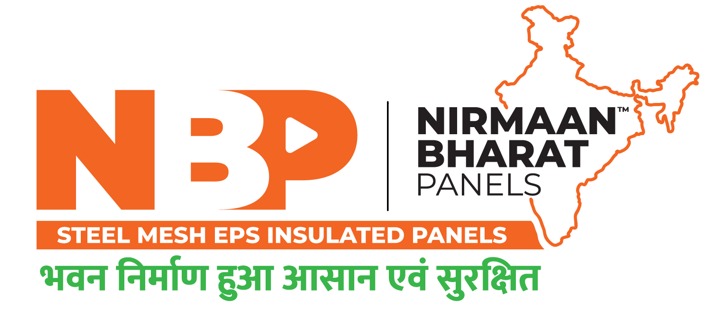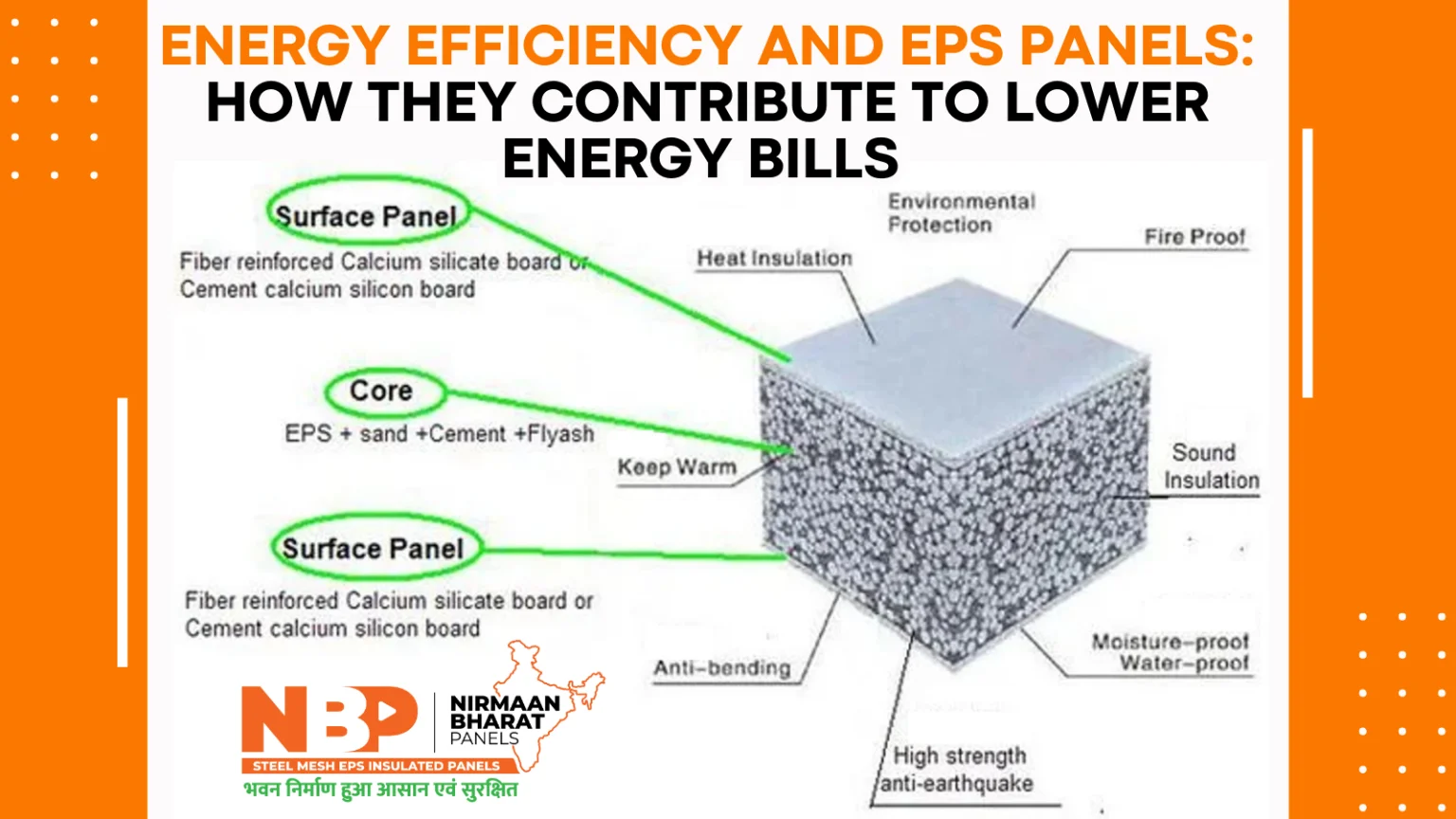In today’s world, where energy costs are continually rising and environmental concerns are increasingly pressing, finding effective ways to improve energy efficiency is more important than ever. One innovative solution that has gained significant traction is the use of Expanded Polystyrene panels. These panels offer a range of benefits that contribute to lower energy bills and a more sustainable building approach. This analysis explores how EPS panel contribute to energy efficiency in buildings, highlighting their impact on reducing energy use and financial expenditures.
Table of Contents
ToggleUnderstanding EPS Panels
EPS panels are constructed from expanded polystyrene, a lightweight, insulating material that is commonly used on walls, roofs, and floors. The panels consist of EPS foam sandwiched between layers of other materials such as cement or fiberboard, providing both structural strength and thermal insulation. panels are praised for their low thermal conductivity, which means they effectively resist heat flow, maintaining stable indoor temperatures. Here’s a detailed look at how panels can enhance energy efficiency and help you save on energy costs:
1. Superior Insulation Properties
EPS panels are well-known for their outstanding thermal insulation qualities. They feature a closed-cell structure that reduces heat transfer, effectively keeping indoor temperatures stable regardless of external weather conditions. This insulation reduces the need for heating during the winter and cooling during the summer, resulting in a substantial decrease in energy consumption.
Thermal Insulation Benefits
The primary way EPS panels contribute to energy efficiency is through their thermal insulation properties. The thermal resistance, or R-value, of a material indicates its effectiveness in insulating against heat transfer. EPS panels have a high R-value compared to traditional building materials, which significantly reduces the amount of heat that escapes or enters a building.
Table 1: R-Value Comparison of Building Materials
| Material | R-Value (Thermal Resistance) |
| EPS Panels | 5.0 |
| Brick | 1.5 |
| Concrete | 2.0 |
| Fiberglass Insulation | 3.0 |
By reducing the amount of heat lost in winter and heat gain in summer, panels help maintain comfortable indoor temperatures. This leads to a reduced reliance on heating and cooling systems, which in turn lowers energy consumption.
Impact on Energy Consumption
EPS panels contribute to energy efficiency by minimizing the need for mechanical heating and cooling. In buildings with EPS panel insulation, energy consumption for maintaining comfortable temperatures is significantly lower compared to those with less effective insulation.
Table 2: Energy Savings with EPS Panels
| Annual Heating Costs (INR) | Annual Cooling Costs (INR) | Total Energy Savings (%) |
| ₹66,400 | ₹49,800 | 40% |
| ₹99,600 | ₹83,000 | — |
Studies have demonstrated that buildings insulated with panels can achieve up to 40% savings on heating and cooling costs. This reduction in energy use not only lowers utility bills but also reduces the environmental impact of buildings by decreasing greenhouse gas emissions associated with energy production.
Read More: The Benefits of EPS Wall Panels for Energy Reduction
2. Reduced HVAC Loads
By maintaining consistent indoor temperatures, panels reduce the workload on heating, ventilation, and air conditioning (HVAC) systems. When these systems don’t have to work as hard to maintain desired temperatures, energy usage decreases, which translates directly into lower energy bills.
3. Minimized Air Leaks
EPS panels create a continuous and seamless insulation barrier, which helps to minimize air leaks. This is crucial because air leaks can lead to significant heat loss and increased energy consumption. By reducing these leaks, panels contribute to a more energy-efficient building envelope.
4. High R-Value
The R-value indicates how well an insulation material resists heat flow. panels have a high R-value compared to many other insulation materials, meaning they provide superior thermal resistance. A higher R-value enhances the overall energy efficiency of a building, leading to further cost savings.
5. Cost-Effective Insulation Solution
EPS panels are a cost-effective choice for insulation compared to other materials. They offer an excellent balance of performance and affordability, which makes them a popular option for both new constructions and renovations. The upfront savings on material costs, coupled with the long-term energy savings, make EPS panels a financially savvy investment.
Cost-Effectiveness
EPS panels offer substantial cost savings both in terms of installation and long-term operational expenses. While the initial cost of EPS panels might be slightly higher than traditional materials, their superior insulating properties lead to lower ongoing energy costs.
Table 3: Cost Comparison
| Expense Type | EPS Panels | Traditional Materials |
| Material Cost | ₹2,490 per square meter | ₹2,075 per square meter |
| Installation Cost | ₹1,245 per square meter | ₹1,660 per square meter |
| Annual Energy Savings | ₹41,500 per year | ₹24,900 per year |
The total cost of ownership for EPS panels is often lower due to the significant energy savings they provide over time. For instance, a building insulated with EPS panels can recoup the higher initial material cost through reduced energy bills within a few years.
6. Improved Indoor Comfort
With their exceptional insulation capabilities, EPS panels help maintain a comfortable indoor environment by eliminating cold spots and drafts. This improved comfort reduces the need for excessive heating or cooling, further lowering energy consumption and costs.
7. Ease of Installation
EPS panels are lightweight and easy to handle, which simplifies the installation process. Their ease of installation can lead to lower labour costs and reduced construction time. Efficient installation also ensures that the insulation is applied correctly, maximizing its effectiveness and energy-saving potential.
8. Durability and Longevity
These panels are durable and resistant to moisture, mold, and pests. Their longevity ensures that they maintain their insulation performance over time, providing consistent energy savings throughout their lifespan. Investing in panels means enjoying long-term benefits without frequent replacements or repairs.
9. Environmental Benefits
By improving energy efficiency, these panels contribute to a reduction in energy consumption and greenhouse gas emissions. Lower energy use means fewer fossil fuels are burned to generate electricity, which is beneficial for the environment. Additionally, EPS panel are often made from recyclable materials, further enhancing their eco-friendly profile.
10. Versatility in Application
EPS panel in India are versatile and can be applied in various building contexts, such as walls, roofs, and floors. This versatility allows for comprehensive insulation solutions that can address different areas of energy loss in a building. Whether for residential, commercial, or industrial projects, These panels offer a flexible and effective solution for boosting energy efficiency.
Conclusion
EPS panels are crucial for significantly improving the energy efficiency of buildings. Their high thermal insulation properties significantly reduce the amount of energy required for heating and cooling, leading to substantial cost savings on utility bills. While the initial investment in panels may be higher than traditional materials, the long-term benefits—both in terms of financial savings and environmental impact—make them a compelling choice for modern construction projects.
By integrating EPS panels into building designs, property owners and developers can achieve better thermal performance, lower energy costs, and contribute to a more sustainable future. As the demand for energy-efficient and eco-friendly building solutions grows, panels are poised to become an increasingly integral component of the construction landscape.


